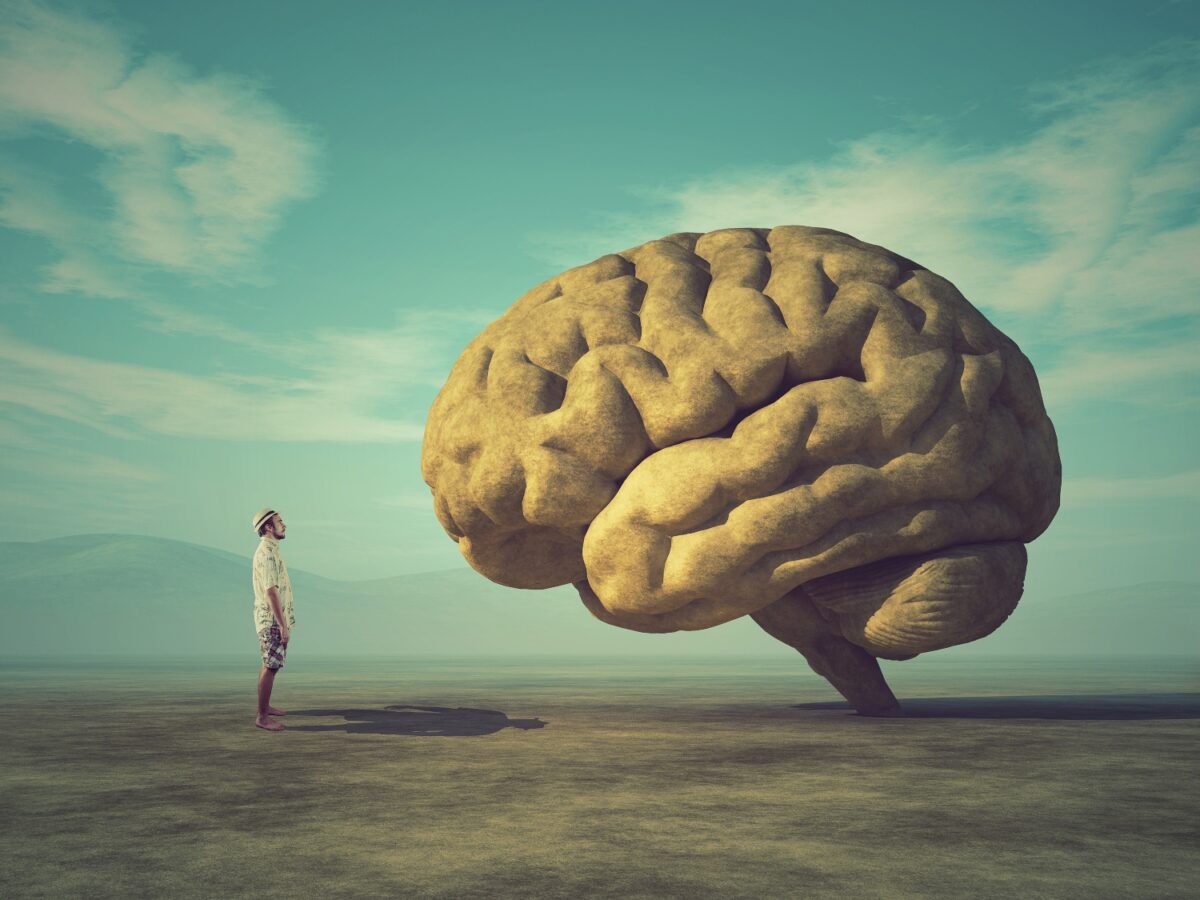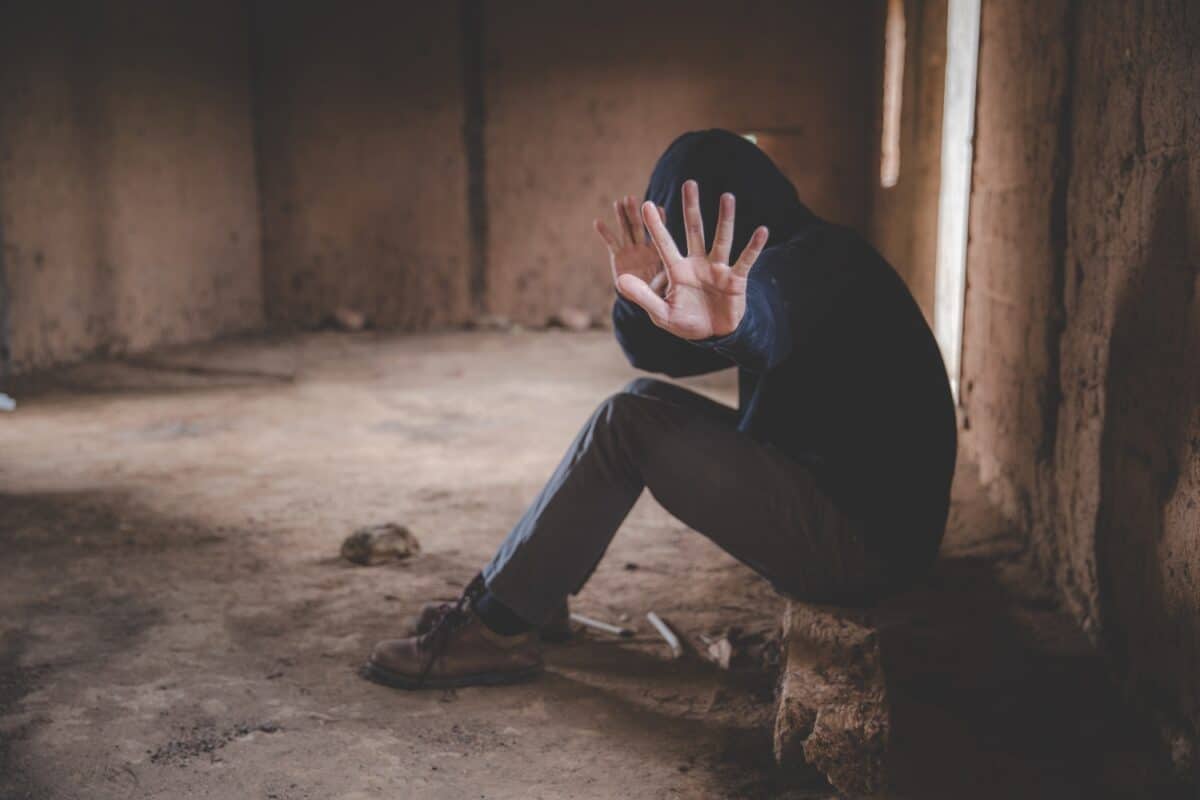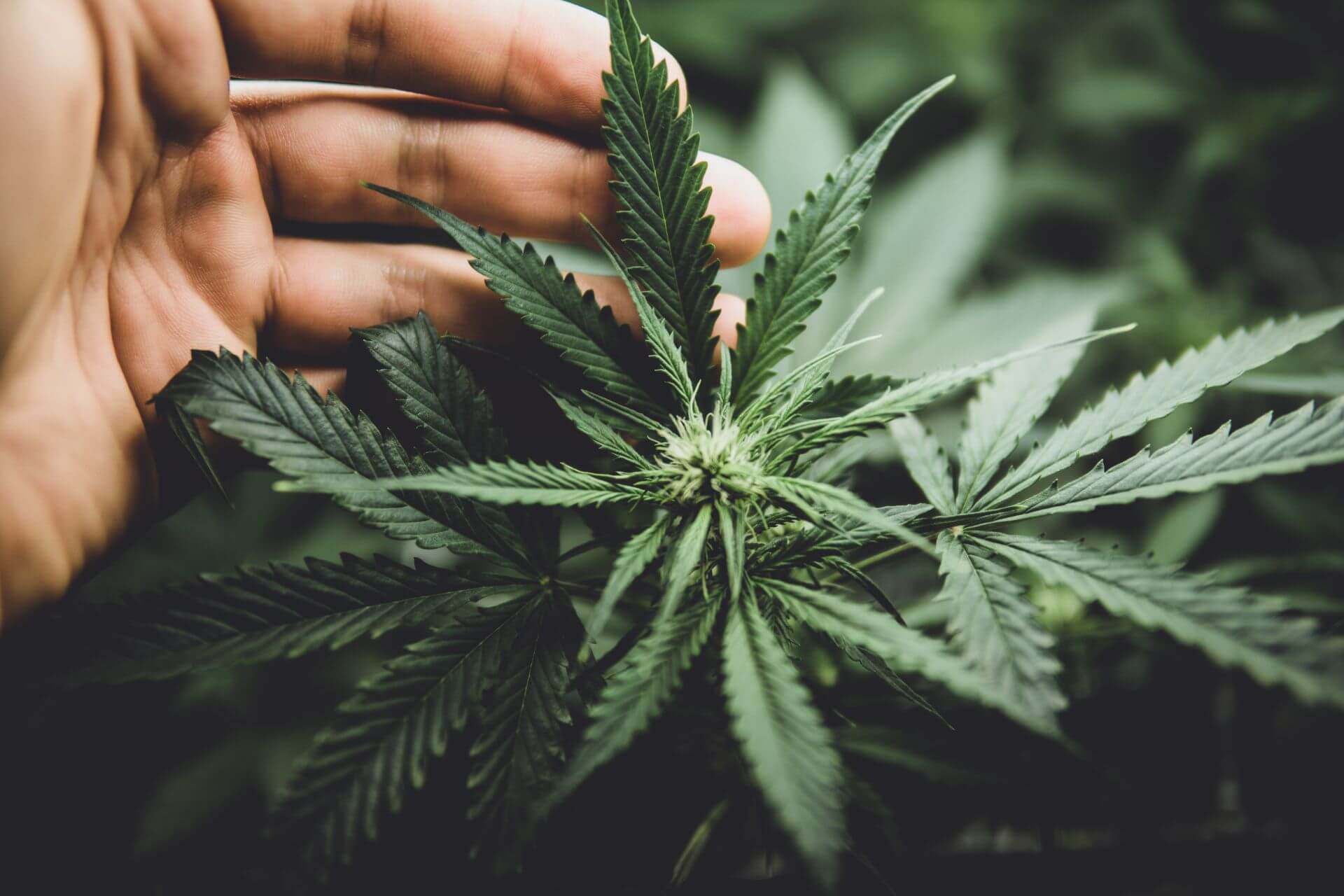An article by Ben C.
Today, it’s commonplace wisdom that suffering is a catalyst for growth. From the vantage point of experience, we see that our past mistakes, misfortunes, and failures make us who we are today. Consequently, when asked if they have any regrets many people answer “no”.
However, the mind is not so easily tamed. Certainly, we may aspire to eschew regrets, but such emotions can be difficult to shake. Despite our resolve, we often can’t help but wonder what might have been if x didn’t happen or we didn’t do y.
I know, deep down, that dwelling on ‘what-ifs’ is immaterial and ultimately unhealthy. That being said, when I think about the drug that derailed my life—diminished my potential, caused me untold suffering, and changed my reality into a nightmare—seeing it entirely through the prism of self-development is a near-impossible task. Yes, I aspire to have no regrets, but if I could change one thing about my past, it would be that I never encountered cannabis.
Naive beginnings
I first discovered marijuana when I was fourteen. Apprehensive but also excited, I shared a joint with friends at my local park. The weed itself was mild (what we would call ‘mersh’) and was interspersed with stalks and seeds. I remember little about this pivotal event beyond coughing a lot and experiencing the infamous giggles.
However, I must have enjoyed the feeling, because shortly after this initiation I began regularly smoking hashish with my friend. We would watch movies, banter, and generally have an enjoyable time. At this point, I experienced virtually zero negative effects beyond occasional social awkwardness.
Cut to several months later and I’d transitioned to smoking high-strength cannabis on a daily basis. At the time, my brother and I lived with our mother who suffered from severe depression and PTSD. She was mainly confined to her bed and basically gave us carte blanche. This meant that every evening people would congregate in my little room to get high, listen to UK hip-hop, and play computer games.
Before falling under the spell of what Graham Hancock calls ‘The Green Bitch’, I was a model student. By the beginning of the next school year, I’d dropped down in all sets aside from English. I don’t want to blame my academic decline solely on this addiction, but the correlation is hard to ignore.
This was only the beginning.
At the time, I had little guidance and discipline, nor awareness about the damage I was doing to my developing brain—damage I would later pay for with my sanity.
How does cannabis affect the brain?

High-grade skunk is a much more powerful intoxicant than many people think. Today, with burgeoning legalisation underway, there are innumerable strains available, each with varying chemical structures. However, what unites the majority is the high amount of THC they contain.
Tetrahydrocannabinol (THC) is the primary psychoactive compound of cannabis. It interacts with the endocannabinoid system which regulates numerous physiological processes, including mood, memory, appetite, pain perception, and immune function. Because THC closely resembles endogenous cannabinoids, it binds to and activates the brain’s CB1 receptors. This activation modulates the release of neurotransmitters such as dopamine, glutamate, and GABA, resulting in changes in neuronal signalling.
Without delving into its complex array of neurochemical effects, it is THC’s influence on dopamine release (particularly in the brain’s reward circuitry) that’s chiefly responsible for the ‘high’.
Broadly speaking, using cannabis causes your senses to become heightened: music sounds more profound, sex feels more pleasurable, food tastes more delicious, and ordinarily boring pursuits can become interesting. Without going into the nuances of Indicas, Sativas, and Hybrids, my experience of being stoned was like being coated in a syrupy layer of contentment. It didn’t just make me ‘feel good’; it offered me escape—escape from the pangs of adolescence, the pressures of education, and my mother’s traumatic deterioration.
The issue is when you abuse cannabis as I did, the feel-good impact of its effects diminishes. As you begin to crave the drug, the novel sensations and psychedelic exploration steadily give way to an addiction to anaesthesia. I know now that I didn’t simply enjoy smoking weed. I was numbing myself. Then, gradually and insidiously, the paranoia began to set in.
Ignoring the warning signs
Even without cannabis, I was a highly sensitive teenager. As a late bloomer, I was always self-conscious about how young I looked. Every time I went to a bar stoned, I became overwhelmed by feelings of discomfort and paranoia, presuming everybody was mocking my youthful appearance. Of course, the reality was nobody cared, but under the sway of the sticky herb, I was convinced of it. I felt exposed, vulnerable, and disoriented—it always took 2–3 alcoholic drinks to wash these feelings away.
Unfortunately, such warning signs weren’t enough to compel me to abstain. Far from it. I would have to hit mental rock bottom multiple times before I eventually formed the resolve to quit. What also made it difficult was how prevalent the drug was. When I was growing up, all my friends smoked weed. Even had I wanted to quit, doing so would have meant either ostracising myself or being subjected to temptation every day.
For those who’ve never dealt with a serious addiction, it can beggar belief how we continue to use a substance despite the clear damage it’s doing. The pull of it is such that, even when the scales are tipped heavily toward the negative, we continue to engage in self-destructive behaviours. Despite our best intentions, those well-trodden neural pathways can be extremely difficult to rewire.

It took me a total of three major psychotic episodes before I finally quit smoking weed. My habit began when I was fourteen and, after many abortive attempts, I finally kicked it at twenty-nine. It may shock some people to know just how many red flags I ignored before taking proper steps toward recovery. This is partly due to the antipsychotic medication I was prescribed. As these blocked some of my dopamine receptors, it was harder to resist the release weed gave me. So, even when cannabis was the clear culprit behind my auditory hallucinations, intense paranoia, and gut-wrenching delusions, I lacked the strength to give up my kryptonite.
It’s important to note that while marijuana was my go-to drug, by seventeen I’d begun regularly using other substances—MDMA, ketamine, cocaine, and nitrous oxide (NOS). All three of my psychotic episodes occurred as a result of being on cocktails of drugs. Given the thrust of this article, this may seem like I’m being disingenuous. However, I know without question that it was my daily THC use that was mainly responsible—it laid the foundation. Without it, even if I had used other substances, I highly doubt I would have developed psychosis.
How do I know?
Even before the devastating drug cocktails, I was becoming prone to delusional thinking and paranoia solely as a result of my cannabis addiction. Having been a chronic user, I’m acutely familiar with the negative effects of this drug. What’s more, the growing research on the relationship between cannabis and psychosis reinforces my conviction.
We’re here to help
Let’s talk
Call now for a totally confidential, no-obligation conversation with one of our professionals.
Cannabis and psychosis
While awareness of it may appear relatively new, the relationship between cannabis and psychosis has its roots in early human history. The world’s oldest pharmacopeia, Pen-ts’ao Ching (circa 2700 BC) includes a passage stating:
“Ma-fen [the fruit of cannabis] if taken in excess will produce visions of devils . . . over the long term, it makes one communicate with spirits.”
In recent years, a growing body of research has reinforced this ancient assertion, with a study from PubMed concluding:
“It is now incontrovertible that heavy use of cannabis increases the risk of psychosis.”
While the exact mechanisms are still not entirely understood, certain factors have been identified as key contributors to the development of this disorder. You may be unsurprised to find that I tick all the boxes.
Genetic predisposition
Those, like myself, with a family history of mental illness are more likely to develop cannabis-induced psychosis. One study found that, when compared with those who used cannabis infrequently or not at all, people who smoked marijuana daily and carried a specific gene variant were seven times more likely to develop the condition.
High-potency cannabis
The use of high-potency cannabis, particularly strains with a high concentration of THC, has been linked with a higher risk of psychosis. This is especially true of strains with low CBD (a natural antipsychotic).
Heavy or frequent use
Prolonged and frequent cannabis use, particularly in large amounts, has been shown to be a major risk factor. This may be due to the cumulative effects of THC on the brain or the development of tolerance and dependence. Research suggests that smoking high-potency marijuana on a daily basis may increase the risk of developing psychosis by almost five times compared to those who’ve never used marijuana.
Age of onset
Adolescence is an integral stage of brain development. During this period, exposure to THC can have long-lasting effects on brain function and mental health. While it’s not certain teenagers will develop psychosis as a result of chronic cannabis use, the risks are too great to ignore:
“Specifically in youth, there is a direct relationship between cannabis use and its risks. The lack of knowledge surrounding its detrimental effects, combined with misunderstandings related to its therapeutic effects, has potential for catastrophic results.”—Psychiatric Times
Psychological factors

People with a history of trauma, stress, or other psychological vulnerabilities can also be more susceptible. My brother and I dealt with a considerable amount of trauma growing up. It’s likely, having to witness my mother’s descent into severe depression, alcoholism, and eventual institutionalisation, that this would have contributed to my psychosis. As this study shows:
“Research has demonstrated a 17.4-fold increase in the odds of developing psychotic symptoms in those who use cannabis and have childhood trauma, which is additively greater than either exposure alone.”
A distinct lack of CBD
You’ve probably heard of Cannabidiol (CBD). In recent years, hundreds of companies (some legitimate, some less so) have been selling CBD products, promoting their benefits for health and wellbeing. CBD is a non-psychoactive compound found in cannabis and, along with THC, is one of the central cannabinoids present in the plant.
In the last several decades, selective breeding of cannabis strains has led to an increase in THC and a decrease in CBD content in many commercially available strains. This is due to THC being responsible for the ‘high’ that many users seek, making high-THC strains more desirable in the market:
“Prior to the 1990s [THC] was less than 2%. In the 1990s it grew to 4%, and between 1995 and 2015 there has been a 212% increase in THC content in the marijuana flower.”
Though the above refers specifically to Colorado, I’d wager the findings could easily be transposed to the UK (where I grew up). Because CBD has been found to have antipsychotic, anxiolytic, and neuroprotective properties, studies suggest that CBD may counteract some of the negative effects of THC (anxiety, paranoia, cognitive impairments, etc.) The strains I smoked throughout my life had little to no CBD content, meaning I was missing out on an all-important, naturally occurring buffer to THC.
The importance of a balanced view
It’s key to avoid binary thinking in respect to cannabis. After all, there’s a reason it’s called the ‘miracle herb’ and research shows it has medicinal efficacy for a variety of conditions. That being said, I strongly maintain that frequently using high-THC strains is playing with fire.
Cannabis affects everyone differently. However, out of all my friends who started smoking at a young age, I only know a few who still smoke regularly today without any negative effects. Most have long since quit because they no longer liked the way it made them feel. Then, there are people like me: those swept up by a perfect storm of epigenetics into full-blown schizophrenia.
Unless you have been prescribed it for a specific condition, I would strongly advise against smoking cannabis regularly. Most importantly, if you’re a teenager or have teenage children, it’s essential you become informed about the well-documented dangers of chronic cannabis use.
In the light of recovery

Without a doubt, I owe my recovery to my support network. Without the assistance of my early intervention team, friends, family, and loving partner, I doubt I’d have been able to take the steps necessary to heal.
One of my chief regrets is that I wish I’d accessed more professional help, such as CBT or peer support, as I feel my failure to do so (mainly as a result of fear) resulted in relapses and increased recovery time.
My engagement with mindfulness practices, creativity, and exercise also had a major impact on my healing journey. Not only did these help to quiet or focus my mind, thereby dampening intrusive thoughts, but they also release many of the brain’s natural feel-good chemicals.
In the short term, these practices served as a healthy, proactive replacement for cannabis. In the long term, they helped get me back to homeostasis, allowing me to better deal with symptoms and providing a clearer perspective on my illness.
I began this article by saying I’m often subject to regrets about my cannabis use. This is undeniably true. However, the suffering I’ve endured has transformed me into a much kinder, more compassionate, and humbler person. I’ve learned firsthand about the dangers of addiction and developed a desire to help others through theirs. If I can raise awareness about the dangers of cannabis addiction (especially in young people), and use what wisdom I’ve gained to steer others toward recovery, all the despair, anxiety, and fear will have been well worth it.
– – – –
If you’re concerned about your (or a loved one’s) cannabis use, reach out to White River Manor today. Their world-class team has a wealth of experience in treating all kinds of addiction and mental health disorders, through individualised programs tailored to meet each clients’ specific needs.
To see how they can help, contact them here for a confidential, no-obligation conversation with one of their mental health professionals.







